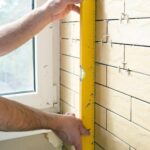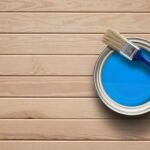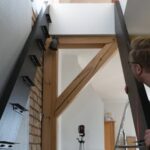Having adequate water pressure is essential for a comfortable and efficient daily routine at home. However, many homeowners struggle with low water pressure, which can be highly frustrating. In this article, we will explore how to improve homes water pressure by understanding the causes and identifying the signs of low water pressure. We will also discuss DIY fixes, checking for leaks, upgrading fixtures, pipe maintenance, adjusting the water pressure regulator, and knowing when to seek professional help.
Low water pressure can be caused by a variety of factors, including clogged pipes, faulty fixtures, and problems with the water supply system. Understanding these issues is the first step in addressing and resolving low water pressure in your home. By recognizing the signs of low water pressure and its potential causes, you can take proactive steps to improve your water flow.
In the following sections of this article, we will delve deeper into DIY solutions for improving water pressure at home. From simple fixes like cleaning clogged faucets to more complex tasks like repairing leaks and adjusting the water pressure regulator, there are several actions you can take to enhance your home’s water pressure without having to call in a professional. Stay tuned as we explore these solutions in detail.
Signs of Low Water Pressure
Slow Flow in Faucets and Showers
One of the most obvious signs of low water pressure is a slow flow from your faucets and showers. If it takes a long time to fill up a sink or the water flow from your showerhead feels weak, there may be an issue with water pressure in your home.
Toilet Tank Fill Issues
Another sign to watch out for is slow-filling toilet tanks. If you notice that it’s taking longer than usual for the toilet tank to fill up after flushing, it could be an indication of low water pressure.
Pressure Fluctuation
Fluctuating water pressure can also be a sign of an underlying issue. If you notice that the water pressure in your home fluctuates between high and low, it may indicate a problem with the water supply or plumbing system.
It’s important to recognize the signs of low water pressure early on so that you can take action to improve it. By paying attention to these warning signs, you can address the issue before it becomes more severe. In the next section, we will explore some DIY fixes and easy solutions for improving water pressure at home.
DIY Fixes
Low water pressure in a home can be frustrating, but fortunately, there are several DIY solutions that can help improve the situation. One simple fix is to check and clean the aerators on your faucets, as these can become clogged with mineral deposits over time, reducing water flow. Removing and cleaning the aerator can often restore water pressure to normal levels.
Another easy solution is to check for any blockages in your showerhead. Mineral deposits and other debris can build up in the showerhead over time, causing a decrease in water pressure. Soaking the showerhead in vinegar can help dissolve these deposits and restore good water flow.
Additionally, it’s important to check your home’s main shut-off valve to make sure it is fully open. Sometimes this valve may not be fully open due to gradual shifting or simply being turned incorrectly by mistake. Ensuring that this valve is fully open can help maximize water pressure throughout your home.
| DIY Fixes | Data |
|---|---|
| Check and clean faucet aerators | This can improve water flow by removing mineral deposits |
| Clean showerhead | Soaking in vinegar can dissolve mineral deposits and improve water pressure |
| Check main shut-off valve | Ensure it is fully open to maximize water pressure throughout the home |
Checking for Leaks
Low water pressure in a home can often be attributed to water leaks in the plumbing system. Identifying and repairing these leaks is crucial to improving water pressure at home. Leaks can occur in various areas of the plumbing system, including underground pipes, faucets, showerheads, and toilets. It is important to regularly check for and repair any leaks to ensure optimal water pressure.
One way to identify leaks is to monitor your water bill for any unexplained increases in usage or costs. Additionally, you can perform a simple DIY test by turning off all water sources in the house and then checking the water meter. If the meter continues to run, this may indicate a hidden leak within the system.
Once a leak has been identified, it is important to promptly repair it to prevent further damage and improve water pressure. Small leaks such as dripping faucets or running toilets can often be fixed with basic tools and replacement parts. However, larger leaks or underground pipe issues may require professional assistance.
It’s important too for customers with big homes that they understand how truly impactful their home usage may be on their overall water bill. Sometimes minimizing overall household use by using dishwashers less frequently could significantly reduce monthly expenses more than an effortless fix would benefit them directly if there isn’t a significant issue causing low flow.
| Examples of Water Leak Sources | Methods of Identifying Leaks |
|---|---|
| Faucets | Water bill monitoring |
| Toilets | DIY meter test |
| Underground pipes | Professional assessment |
Upgrading Fixtures
When trying to improve your home’s water pressure, one of the most effective solutions is upgrading your fixtures to high-pressure showerheads and faucets. By making this simple change, you can significantly enhance the water flow in your bathroom and kitchen.
Benefits of High-Pressure Fixtures
High-pressure showerheads and faucets are designed to maximize water flow while conserving water. These fixtures can provide a strong, invigorating spray that makes for a more enjoyable shower experience. Additionally, high-pressure showerheads and faucets can help you save on your water bills by using less water while still delivering a powerful stream.
Installation Tips
When installing new high-pressure fixtures, it’s important to ensure that they are compatible with your existing plumbing system. It’s recommended to consult with a professional plumber to determine which fixtures will work best for your home. Additionally, make sure to follow the manufacturer’s instructions carefully when installing the new fixtures to guarantee optimal performance.
Choosing the Right Fixtures
When selecting high-pressure showerheads and faucets, consider factors such as design, functionality, and water efficiency. Look for fixtures that are WaterSense labeled or have been proven to provide strong water pressure while using minimal water. Research different options available in the market and choose fixtures that suit your preferences and needs.
By upgrading your home’s fixtures to high-pressure showerheads and faucets, you can effectively improve your water pressure and enhance your overall daily experience with better water flow.
Pipe Maintenance
Low water pressure in a home can often be attributed to clogged or blocked pipes. Over time, mineral deposits, debris, and even corrosion can build up inside the pipes, restricting the flow of water and causing a decrease in water pressure. Understanding how to maintain and clean the pipes can help improve water flow and alleviate low water pressure issues.
There are several DIY solutions for improving water pressure at home through pipe maintenance. One effective method is using a pipe snake or auger to clear out any clogs or blockages within the pipes.
This tool can be inserted into the pipe to break up and remove any debris that may be obstructing the flow of water. Additionally, flushing the pipes with a mixture of vinegar and water can help dissolve mineral deposits and buildup, restoring better water flow and pressure.
Regular maintenance of pipes is essential for preventing clogs and blockages that can lead to low water pressure. Installing mesh screens on drains can help catch debris before it enters the pipes, reducing the risk of clogs forming. Furthermore, being mindful of what goes down the drains and avoiding pouring grease, hair, or other substances that may contribute to clogs can also help maintain better water flow throughout the home.
In addition to these DIY solutions, it’s important to schedule professional pipe inspections and maintenance on a regular basis. A licensed plumber can conduct thorough pipe inspections using specialized equipment to identify any potential issues that may be affecting water pressure in the home. By staying proactive with pipe maintenance, homeowners can effectively improve their home’s water pressure and ensure optimal performance from their plumbing system.
Water Pressure Regulator
The water pressure regulator plays a crucial role in maintaining the optimal water pressure in your home. If you are experiencing low water pressure, it’s essential to understand how the pressure regulator works and how to adjust and maintain it for better water flow.
- First, locate the pressure regulator, which is typically found near the main water supply shut-off valve. It may be housed in a small box or attached to the plumbing system.
- Use a pressure gauge to measure the current water pressure. The ideal range for residential water pressure is typically between 40-80 psi (pounds per square inch). If the pressure is below or above this range, adjustments may be necessary.
- To adjust the pressure regulator, use a flathead screwdriver to turn the adjustment bolt clockwise to increase the pressure or counterclockwise to decrease it. Make small adjustments and recheck the pressure until it falls within the recommended range.
Regular maintenance of the pressure regulator is also essential for ensuring consistent water pressure throughout your home. Over time, mineral deposits and debris can build up inside the regulator, causing it to malfunction and reduce water flow. Here’s how you can maintain your pressure regulator:
- Shut off the main water supply to your home before performing any maintenance on the pressure regulator.
- Remove the cover of the pressure regulator and carefully clean any debris or mineral buildup using a soft brush or cloth. You can also use a mild cleaning solution if necessary.
- Inspect all components for signs of wear or damage and replace any worn parts as needed. Once everything is clean and in good condition, reassemble the regulator and turn the main water supply back on.
By understanding how to adjust and maintain your water pressure regulator, you can effectively improve your home’s water pressure and ensure a steady flow of water throughout your plumbing system.
Calling the Pros
In some cases, despite your best efforts with DIY fixes and upgrades, persistent low water pressure may require the expertise of a professional plumber. If you’ve tried everything from checking for leaks to adjusting the water pressure regulator, but still experience low water pressure, it’s time to call in the pros.
A licensed plumber will be able to conduct a thorough inspection of your plumbing system to identify any underlying issues that may be causing the low water pressure. They have the knowledge and tools to diagnose and resolve more complex problems that may be affecting your home’s water pressure.
Professional plumbers can also provide recommendations for long-term solutions to improve your home’s water pressure. This may include replacing old or damaged pipes, installing a new pressure regulator, or making adjustments to your plumbing system that are beyond the scope of DIY repairs. By seeking professional help for persistent low water pressure, you can ensure that the root cause of the issue is properly addressed and resolved, leading to improved water flow throughout your home.
Ultimately, if you’ve exhausted all DIY options and are still struggling with low water pressure in your home, don’t hesitate to reach out to a qualified plumber. They have the expertise and experience needed to identify and address any underlying issues affecting your home’s water pressure. With their help, you can ensure that your plumbing system operates at its best, providing consistent and adequate water flow for all your household needs.
Frequently Asked Questions
How Do I Increase the Water Pressure in My House?
Increasing water pressure in your house can be achieved by checking for any clogged pipes, valves, or faucets that may be causing the restriction. Additionally, adjusting the pressure regulator valve and ensuring proper pipe size can help improve the water pressure.
Can Water Pressure in a House Be Adjusted?
Yes, water pressure in a house can be adjusted. This can be done by adjusting the pressure regulator valve, which is usually located near the main water line entry point. It’s important to make small adjustments at a time to avoid damaging the plumbing system.
Why Water Pressure in My House Is Weak?
Weak water pressure in a house can be attributed to various reasons such as clogged pipes or faucets, a faulty pressure regulator valve, mineral deposits buildup in pipes, or having a supply line that’s too small for your household needs. Identifying and addressing these issues can help improve water pressure.

I’m thrilled to have you here as a part of the Remodeling Top community. This is where my journey as an architect and remodeling enthusiast intersects with your passion for transforming houses into dream homes.





